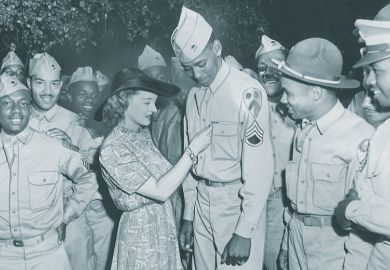The films of Kenji Mizoguchi (1898-1956) are still too rarely shown. While the work of his younger contemporary Akira Kurosawa is readily available on DVD and video, opportunities to see Mizoguchi's serenely moving films are, with a few exceptions, confined to touring retrospectives. Nevertheless, Mark LeFanu does not doubt Mizoguchi's importance. Pointing to sellout screenings at international retrospectives in the run-up to his centenary in 1998, he argues that Mizoguchi, half a century after his death, is "alive and relevant" to modern audiences.
This conviction is certainly expressed in LeFanu's style: every sentence conveys a passionate interest in and admiration for Mizoguchi's art. In the postscript, LeFanu professes a kinship with and respect for such journalist-critics as David Thomson, Andrew Sarris and Andre Bazin; he writes as an enthusiast rather than as an academic. His book is beautifully written: its prose is clear, precise and jargon-free, offering an aesthetic appreciation, not a dissection of Mizoguchi's work along ideological or theoretical lines.
The bulk of the book details the stories and stylistic features of the films, and elucidates their emotional effect. Some might criticise the author's approach as naively subjective; it is certainly essentialist.
LeFanu is old-fashioned enough to believe that the subject of Mizoguchi's films is the human condition. In his evaluation, he invokes canonical figures of the Western tradition: Mizoguchi's masterpiece, Sansho Dayu , is compared to the work of Shakespeare for its "emotional range and moral splendour"; Aristotle's concept of catharsis is invoked in the context of a lesser known film, Women of the Night . LeFanu is not afraid of making such cross-cultural comparisons, because he believes that Mizoguchi's work transcends cultural boundaries and treats universal themes.
His films, LeFanu asserts, are "great universal art"; they "shake and move the viewer by the power, refinement and compassion with which they confront human suffering". From this perspective, it would scarcely seem to matter whether the viewer is a Westerner or Japanese.
Nevertheless, LeFanu does not overlook the context. He acknowledges the cultural obstacles to full appreciation by Western audiences, mentioning the stylisation of Japanese acting techniques, and the differences in moral assumptions and aesthetic expectations.
He poses the question: "Is our interest in (Japanese films) always condemned to be essentially scholarly and archaeological?" Though LeFanu answers in the negative, he sees that we need to understand the context in order to appreciate the films.
Thus, sections of the book relate Mizoguchi's art to his personal history, to the history and culture of his country, and to the themes and style of his contemporaries in the Japanese film industry.
LeFanu's love for Japanese cinema as a whole is an advantage here. Many Western writers on film are aware of only the handful of universally acknowledged Japanese directors. LeFanu, by contrast, is familiar with the work of Mizoguchi's contemporaries, and makes stimulating comparisons with such film-makers as Yuzo Kawashima and Heinosuke Gosho, still largely unknown in the West. Though he appreciates the uniqueness of Mizoguchi's art, LeFanu is careful to situate it in a rich national tradition.
In the context of international film history, Mizoguchi is, LeFanu claims, "the greatest master of the method of shooting known as extended sequence or long-take composition".
This method, which rejects the fast editing of much modern popular cinema, marks him as the ancestor of many of today's most distinguished arthouse directors. Drawing on the work of such theorists as Bazin, LeFanu argues convincingly that this style, where the action is seen to unfold in "real time", is uniquely capable of creating tension and emotional power.
LeFanu's book is thoroughly researched and makes full use of the available English-language literature about Japan and Japanese cinema. However, since the author neither speaks nor reads Japanese, he is unable to draw on the wealth of factual data and critical literature produced in Mizoguchi's own language. This fact restricts the book's scope a little, and is responsible for occasional errors, mainly in the transliteration of names and titles.
However, LeFanu's work will be appreciated by students, academics and enthusiasts alike. I hope it will pave the way for further studies.
Alexander Jacoby is a freelance writer and film critic with a particular interest in Japanese culture and cinema.
Mizoguchi and Japan: Mark LeFanu
Publisher - British Film Institute
Pages - 224
Price - £50.00 and £15.99
ISBN - 1 84457 056 8 and 57057 6
Register to continue
Why register?
- Registration is free and only takes a moment
- Once registered, you can read 3 articles a month
- Sign up for our newsletter
Subscribe
Or subscribe for unlimited access to:
- Unlimited access to news, views, insights & reviews
- Digital editions
- Digital access to THE’s university and college rankings analysis
Already registered or a current subscriber? Login



